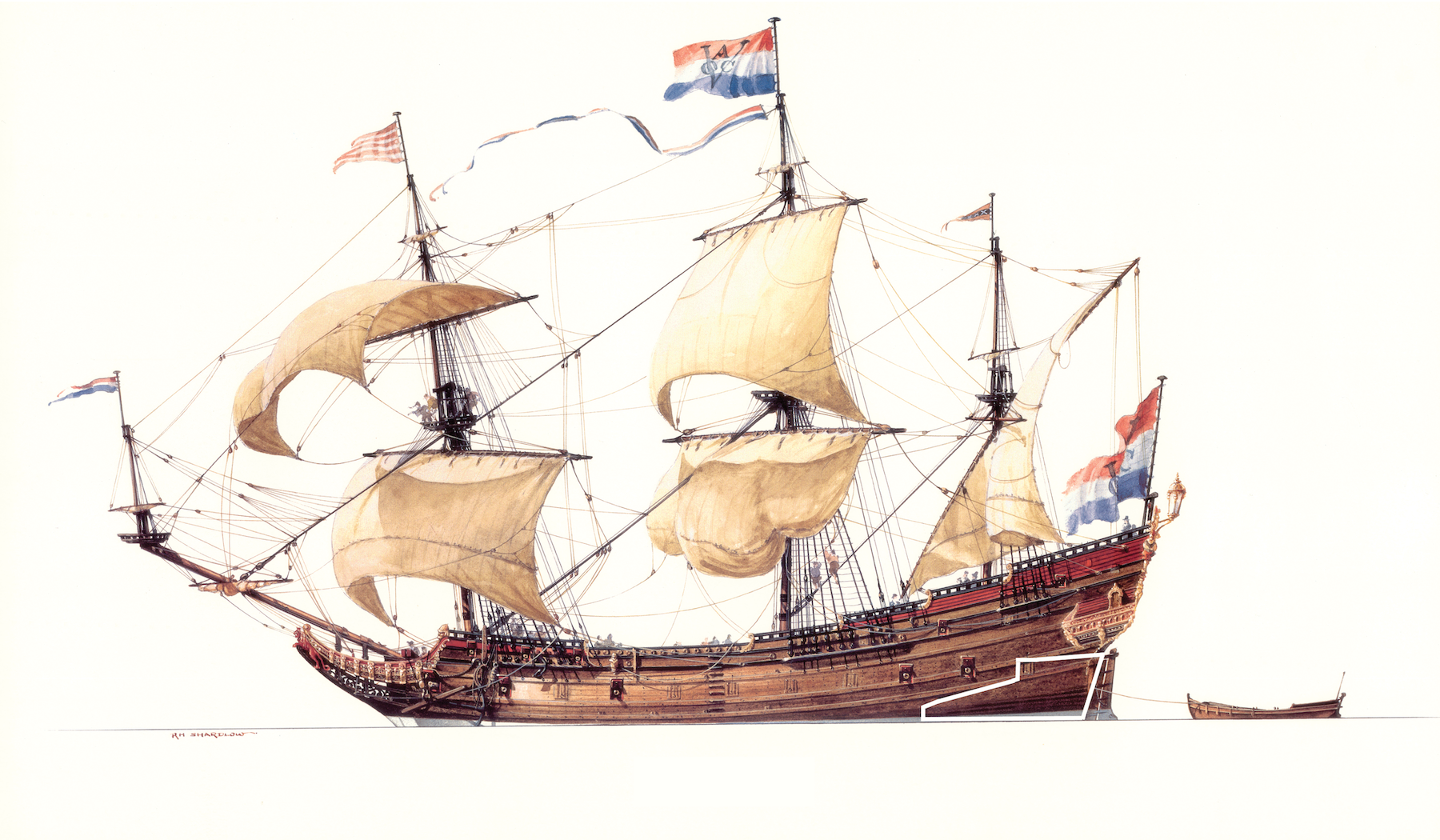
58

w
Batavia’s timbers are a unique record of early VOC ship construction. They are the only hull timbers from an early seventeenth century VOC ship that have been archeologically recovered and conserved anywhere in the world. Their exceptional, preserved condition has enabled researchers to examine details that have elsewhere been lost to time, with samples carefully taken for scientific analysis.
Batavia’s hull was made from two layers of oak planks. At up to 15 centimetres thick, the ship was designed to withstand the arduous journey to Indonesia and was much stronger than the local single-planked ships intended for European waters. The hull was further reinforced by an outer layer of pine sheathing, which protected the timbers from marine borers.
Batavia had a bottom-based construction, which was common for VOC ships at the time. The only seventeenth century source that describes this construction method is Nicolaes Witsen (1671). He does not provide a complete set of dimensions or proportions, which demonstrates the practical focus of Dutch shipbuilding at the time. Instead, the first step was the assembly of the central spine (a keel, a stem, and a sternpost). Remarkably, the rest of the hull was built up mostly by eye.
Tree ring analysis has shown that the timbers were sourced from forests in northern Germany and the Baltic. These were harvested in the years before Batavia was built and imported into the Netherlands to be cut by handsaw. In total, over 700 trees were used to build Batavia.


Maritime archaeologist Wendy van Duivenvoorde inspecting the reconstructed Batavia hull at the WA Shipwrecks Museum in Fremantle.
Credit: WA Museum

Maritime archaeologist Wendy van Duivenvoorde inspecting the Batavia reconstructed hull at the WA Shipwrecks Museum in Fremantle.
Credit: WA Museum

Batavia timbers were treated by conservators, to stablise their condition after hundreds of years in sea water.
Credit: WA Museum, MCD146-531

Cross-section of Batavia’s hull showing all layers of planking and frame timbers.
Credit: W. van Duivenvoorde | Flinders University

Bottom-based construction as described by Nicolaes Witsen.
Credit: G. de Weerdt

Reconstruction of the Batavia ship showing the preserved hull, outlined in white at the stern of the ship.
Credit: R. Shardlow


DUTCH SHIPBUILDING